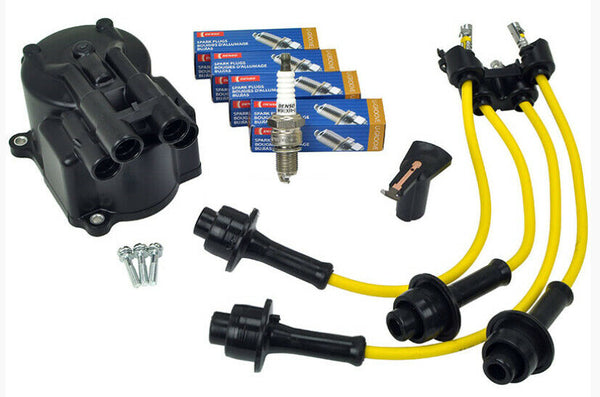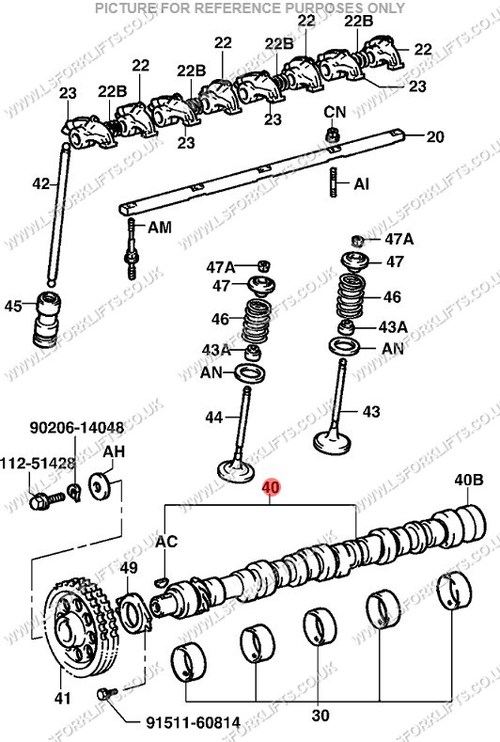Why the 4Y Engine Is a Top Choice for Reliable and Long-Lasting Performance
Why the 4Y Engine Is a Top Choice for Reliable and Long-Lasting Performance
Blog Article
The Ultimate Overview to the Engine: Key Insights for every single Cars And Truck Fanatic
Comprehending the engine is essential for any automobile lover, as it functions as the heart of the vehicle and dictates its performance. This overview gives a thorough exam of engine composition, types, and the technicians behind their operation, including the innovative modern technologies that are improving the automobile landscape. In addition, it highlights the vital nature of maintenance practices that can substantially influence an engine's life expectancy. The intricacies of engine characteristics and the newest improvements in innovation existing inquiries that warrant additional exploration. What might these insights expose concerning the future of vehicle design?
Composition of an Engine
Understanding the makeup of an engine is crucial for any type of vehicle enthusiast aiming to dig deeper right into automotive auto mechanics. An inner combustion engine mainly contains several vital parts that function in unison to convert fuel right into power.
At the heart of this system exists the cylinder block, which houses the cyndrical tubes where combustion takes place. Piston activity within these cylinders is helped with by the crankshaft, which converts straight movement right into rotational power. In addition, the camshaft plays a crucial role in regulating the opening and closing of the engine's valves, making certain proper air-fuel mixture consumption and exhaust gas expulsion.
Other crucial elements include the fuel system, which provides the engine with the necessary fuel, and the ignition system, responsible for initiating burning - 4y engine. The air conditioning and lubrication systems are also essential, preserving ideal operating temperatures and reducing friction, specifically
Engine Types and Configurations
A diverse variety of engine kinds and arrangements exists, each offering distinct advantages and disadvantages tailored to various driving needs and choices. The most typical engine types consist of inline, V, level, and rotating configurations.
Inline engines, featuring cyndrical tubes set up in a solitary line, are known for their simplicity and effectiveness. They are usually discovered in compact lorries, using a balance of power and economic climate. V engines, defined by their two banks of cylinders prepared in a V shape, supply higher performance and smoother operation, making them prominent in sporting activities and luxury vehicles.
Level engines, or boxer engines, have actually flat opposed cylinders, which add to a reduced center of mass, enhancing automobile stability. These are frequently seen in brand names like Subaru and Porsche.
Rotary engines, although less usual, use an unique layout with a triangular blades and deal high power-to-weight proportions. They master lightweight and small applications, largely seen in Mazda automobiles.
Each engine type offers certain performance qualities, weight circulations, and fuel efficiencies, making certain that cars and truck fanatics can select the ideal engine setup to match their driving style and vehicle needs.

How Engines Work
Engines, no matter their type or setup, operate fundamental concepts that regulate their performance and efficiency. At their core, engines convert gas into power with a series of regulated surges or compressions. This process generally involves 4 major strokes: intake, compression, power, and exhaust.
Throughout the intake stroke, the engine attracts in a blend of air and fuel. The compression stroke complies with, where the blend is compressed in the cylinder, increasing its temperature level and stress. In the power stroke, a trigger stirs up the compressed mixture (in gasoline engines) or the mixture sparks spontaneously (in diesel motor), leading to a quick expansion of gases that pushes the piston down. Ultimately, official site the exhaust stroke expels the spent gases from the cyndrical tube.
The performance of an engine is affected by different variables, including the style of the burning chamber, the type of gas made use of, and the accuracy of the engine's elements. Comprehending these basic principles is critical for cars and truck lovers who look for to value the intricate auto mechanics behind their cars, as well as for those intending to enhance performance via modifications and tuning.
Technologies in Engine Innovation
In the last few years, improvements in engine innovation have actually considerably transformed the automobile landscape, improving both performance and ecological sustainability. Among one of the most noteworthy innovations is the growth of turbocharging and supercharging, which enables smaller sized engines to produce higher power results see here without compromising fuel efficiency. This has caused a rise in the appeal of downsized engines, offering makers with the ability to satisfy rigid exhausts regulations while preserving performance standards.
In addition, crossbreed and electric powertrains are reshaping the engine paradigm. Hybrid systems integrate inner burning engines with electric motors, enhancing gas intake and lowering discharges. Completely electric lorries (EVs) eliminate the burning engine completely, counting on advanced battery technology to provide immediate torque and excellent acceleration.
Furthermore, the assimilation of man-made intelligence and artificial intelligence in engine administration systems permits real-time optimization of performance parameters, improving effectiveness and responsiveness. Advancements such as variable shutoff timing and straight fuel shot linked here further fine-tune burning procedures, making the most of power output while decreasing waste.
As the automobile market remains to progress, these innovations in engine technology will play a critical function in shaping the future of mobility, focusing on both performance and sustainability.
Upkeep Tips for Enthusiasts
Preserving an engine is as important as the developments that boost its performance. Normal upkeep not only prolongs the life of your engine however also makes certain optimum performance. Beginning with routine oil adjustments, following the producer's recommendations for oil kind and modification periods. Clean oil lubricates engine components properly, preventing wear and tear.
Check and replace air filters regularly to make certain correct airflow, which is essential for burning effectiveness. A clogged air filter can bring about reduced performance and increased gas intake. Keep track of the coolant degrees to protect against getting too hot, and change coolant according to the service timetable. 4y engine.

Final Thought
In conclusion, a detailed understanding of engine anatomy, types, and auto mechanics is vital for automotive enthusiasts. Normal upkeep practices, including oil modifications and air filter checks, are crucial for making certain optimal engine functionality and durability.

Engines, regardless of their kind or arrangement, run on basic concepts that regulate their performance and effectiveness. In the power stroke, a trigger stirs up the compressed mix (in gas engines) or the blend ignites spontaneously (in diesel engines), resulting in a quick expansion of gases that presses the piston down.In recent years, advancements in engine technology have substantially changed the automotive landscape, boosting both performance and environmental sustainability.
Report this page